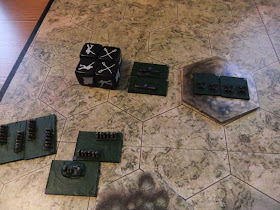This was built from a
Fairy Kikaku (no really!) resin kit bought from
HLJ in Japan. A fairly basic kit, it went together quite well after cleaning off a fair bit of flash. The paint job was complemented by some markings from the decal box - the markings in the kit looked a bit rough.
Designed for the ground attack role, the Ba.65 was quite an important aircraft, seeing service during the Spanish Civil War and WW2. As well as serving with the Regia Aeronautica, some were sold abroad - Portugal, Chile and Iraq. Apparently it did quite well in Spain - one shot down a Republican SB-2 - but like at lot of Italian kit, the Breda was somewhat past it's best by the time it encountered 'proper' opposition over North Africa.
I first came across the Breda 65 at an impressionable age in one of the splendid (for the time at least) Purnell 'Specials':
At around £8 (1,000 Yen) this isn't a cheap kit, but then nor is it prohibitively pricey. The same company makes a selection of other unusual aircraft, including the
He112 and
Myrsky. Tempting.
At last my Italians have a ground attack capability - my Brits are trembling. With silent laughter.
Incidentally, I came across this
film clip showing Ba.65s in action over Spain, complete with excitable commentary.





















































